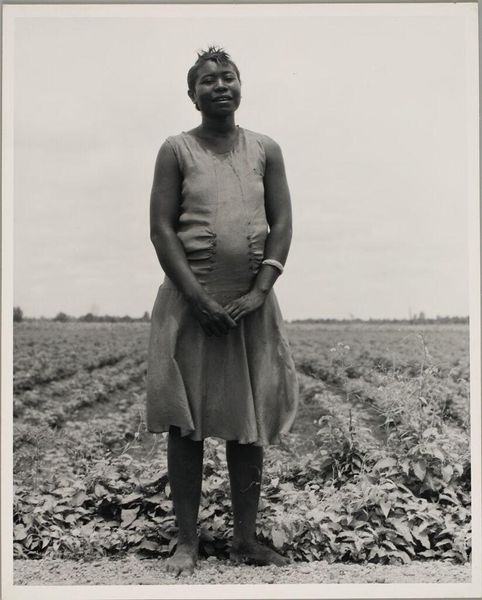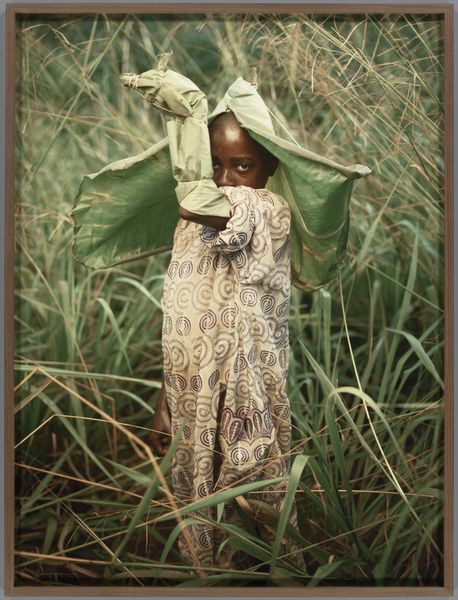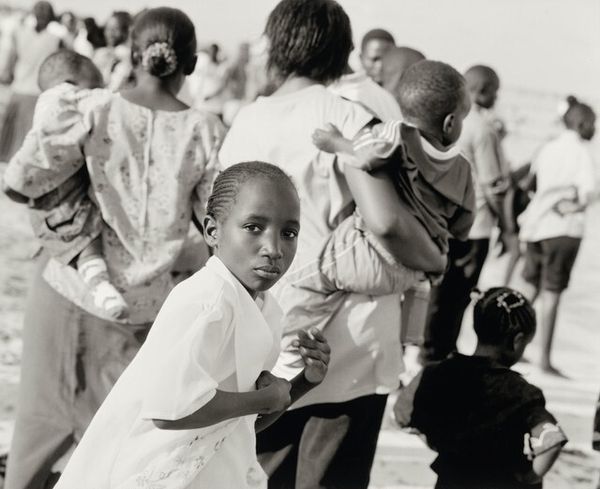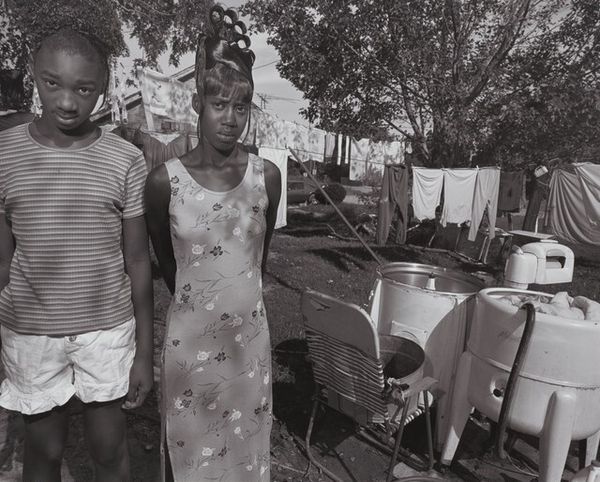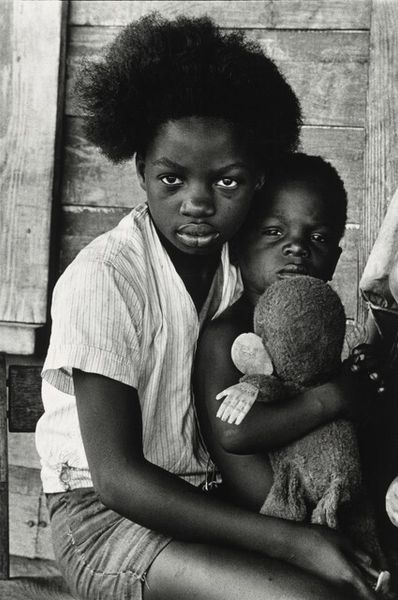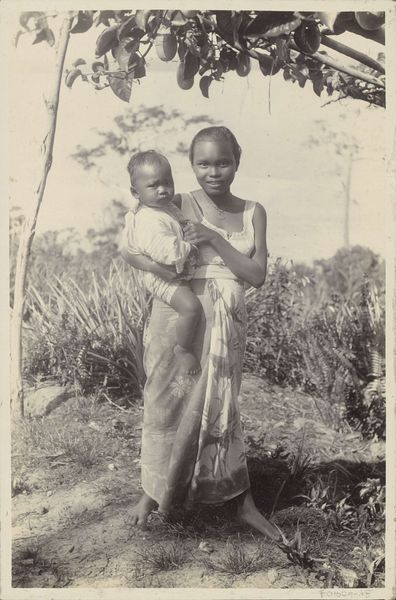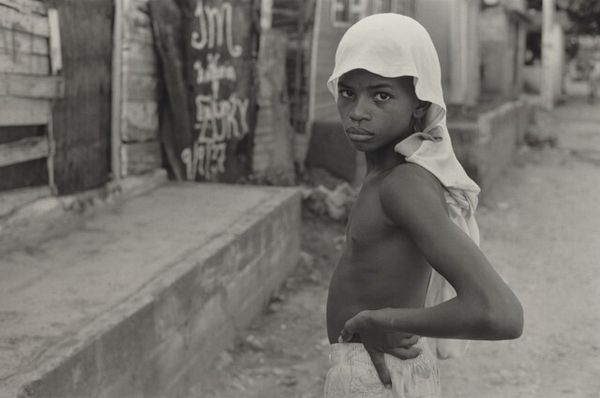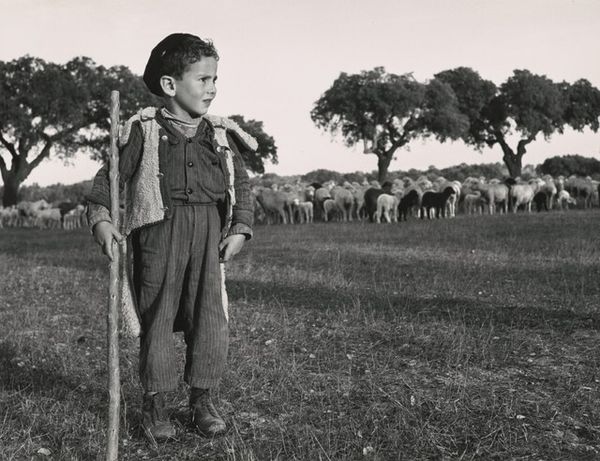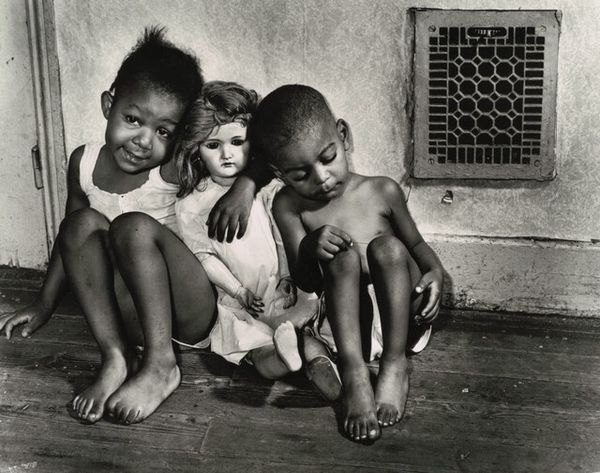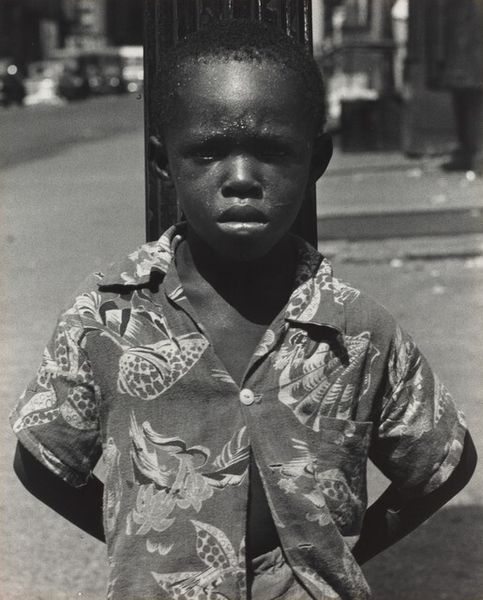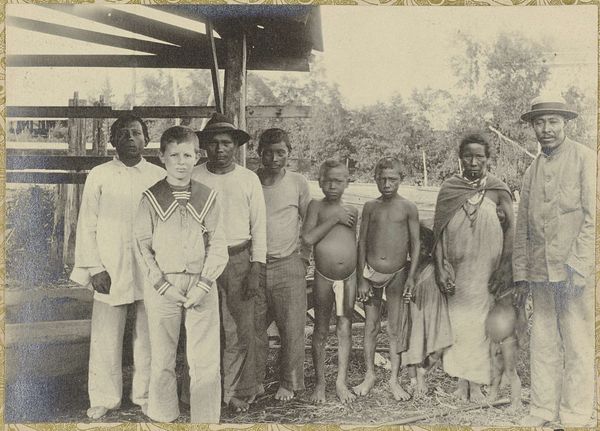
c-print, photography
#
portrait
#
contemporary
#
landscape
#
c-print
#
photography
#
modernism
#
realism
Dimensions: image: 29 × 44.25 cm (11 7/16 × 17 7/16 in.) sheet: 40.64 × 50.8 cm (16 × 20 in.)
Copyright: National Gallery of Art: CC0 1.0
Curator: Gosh, this one gives me such a mixed bag of feelings, all tangled up like kite strings after a storm. Editor: We’re looking at an untitled, undated c-print photograph—scholars place it circa 1971—by William Eggleston. What evokes such a strong emotional response for you? Curator: It's those children. The clarity and vibrancy of the color make it feel like they're standing right in front of me, you know? But the way they’re placed in this vast, almost dreamlike landscape—there’s something so bittersweet about it. That huge expanse of the cotton field right behind them looms, not in a good way. Editor: Right. Eggleston is often credited with legitimizing color photography as a fine art form. But beyond aesthetics, this photograph captures a critical moment in America's agricultural and racial history. The setting appears to be the Mississippi Delta, historically reliant on enslaved labor, and later, exploited sharecropping systems, primarily Black communities. Those fields weren’t always for joy. Curator: Exactly! The contrast is sharp as a tack. These kids, dressed in their Sunday best, stand before a history of oppression. Their gaze meets ours directly; no room to squirm, and it really lands hard on the soul. And what is their relationship to those fields? Editor: Considering Eggleston's artistic vision, which often seeks to find beauty in the mundane, the everyday, one can wonder if he wanted to bring the everyday reality of these kids' lives—inextricably connected to this complicated history of agriculture—to the fore. It challenges the viewer to confront these hard realities. Curator: And he's brilliant at it! The composition is deceptive. Casual, almost snapshot-like, but deliberate and complex in what it conveys. All the green with spots of gold on this dry field makes you wanna reach out and touch something, anything. Editor: It's a powerful statement. The photograph uses a seemingly ordinary scene to spark discussions about power, history, and identity. What’s your biggest takeaway, after considering it from this lens? Curator: Well, seeing those kids' faces framed by that landscape makes me question my own position, you know? It's like, what am I looking at, and what am I *not* seeing? It's an unsettling and beautiful question. Editor: Precisely. Art should make us question, engage, and perhaps, act. Thank you for your reflections.
Comments
No comments
Be the first to comment and join the conversation on the ultimate creative platform.
